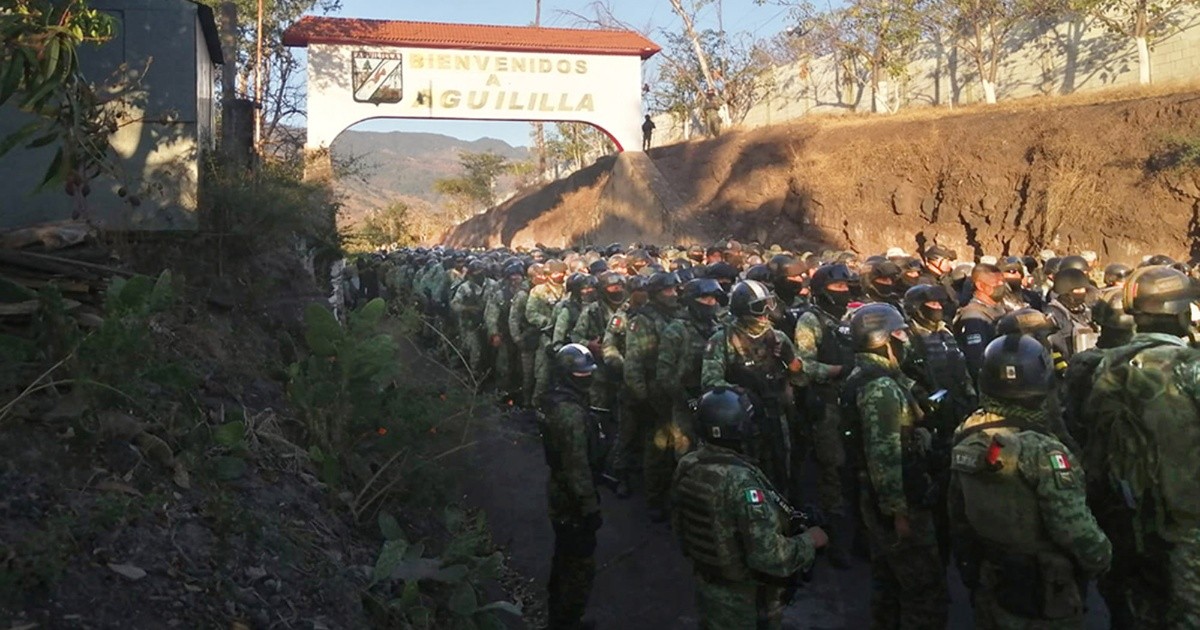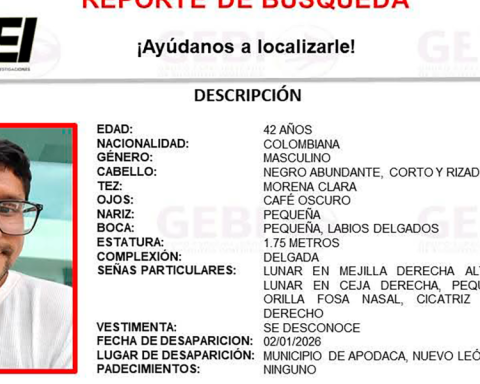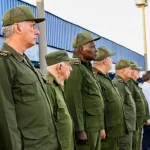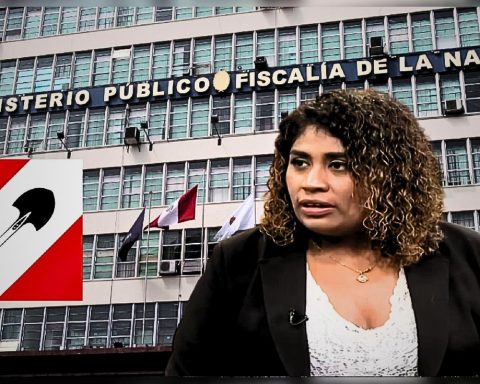During the current federal administration, the Secretary of National Defense (Sedena) has been entrusted with new tasks that range from supporting public health work during the Covid-19 pandemic, to building airports. Along the way, the Mexican Army has undertaken a task that has not been publicized by the head of the federal Executive, Andrés Manuel López Obrador: develop its own weapons.
There are at least five projects to create weapons that the Army has official records of their development with AMLO, some of which began in 2019 — the first year of the current administration, whose motto in the fight against insecurity is “hugs and not bullets”—and that it has maintained assets during the SARS-CoV-2 coronavirus pandemic in 2020 and 2021 and some of which are expected to be financed until 2023.
According to information from the Army, the projects collaborate from military engineers to specialized areas of public universities, such as the National Polytechnic Institute (IPN), the University of the State of Mexico and the National Council of Science and Technology (Conacyt).
Specifically, for the execution of studies for the development of weapons, in conjunction with higher education institutions, the Army has allocated more than 300 million pesos from 2019 to 2021, according to quarterly reports released through the Transparency Platform, in the section on studies financed with public resources.
However, these figures differ from those that Sedena reported via transparency where it indicated that, between 2019 and 2021, it had allocated 71 million 239,019 pesos and 88 cents for the projects.
While between 2022 and 2023 it was estimated to allocate another 19 million 880,444 pesos.
high caliber rifle
One of the Sedena projects that stands out is the creation of the prototype of a .50 caliber precision rifle.
For this weapon, according to data from the Army until last year, there were at least four military engineers assigned to the project and four elements belonging to the War Materials service, while the public university that participated in the development was the Interdisciplinary Professional Unit in Engineering and Advanced Technologies of the National Polytechnic Institute (UPIITA-IPN).
The objective of the project, according to the Secretary of National Defense, is “to design and manufacture the prototype of a 0.50-caliber precision rifle, as part of the FX family of weapons, in order to subsequently generate the technological development for its mass production”.
It is worth mentioning that organized crime has increased its use of this type of rifle in recent years while, at the same time, the Armed Forces have increased their confiscation.
According to data from the Mexican Army and the Secretary of the Navy, the number of rifles of this type seized by elements of these agencies has been on the rise in recent years.
For example, according to data from the agencies, between 2006 and 2008, the beginning of the declared war against drug trafficking by the government of Felipe Calderón, there were no seizures of this type of rifle.
In 2009 there were records of the seizure by the Sedena (four) and the Navy (one) of five of these rifles in the states of Oaxaca, Baja California, Sinaloa and Guerrero.
By 2010 the figure increased to 17, all seized by Sedena. In 2011 there were 27 .50 caliber rifles; in 2012, 18 were seized. In 2013, nine were seized.
While for 2014, 2015, 2016, 2017, 2018 and 2019, 24, 35, 17, 33, 34 and 68 were seized, respectively.
In turn, until August 2020, 35 rifles of that caliber had been seized, all by the Army.
These rifles “are extremely lethal because, on the one hand, the range of the weapon is much greater: it is more than a mile (1.6 kilometers), on the one hand if you go against a common citizen it is very easy to do a lot of damage.
“But also if you’re going against police or military forces you also have a lot more capability,” said John Lindsay-Poland, a US anti-proliferation activist.
The expert stated, in an interview, that in the United States the cost of this type of weapon is around 10,000 dollars.
Another weapon being developed by the Army is a 5.56 mm caliber revolving machine gun for ground vehicles AGX16, which is in its second phase of development with which it collaborates with the Autonomous University of the State of Mexico (UAEM).
The objective of the project, according to Sedena, is “to continue with the development of a rotary machine gun, in a caliber that allows us to cover the antipersonnel and antimaterial needs of urban operations, while allowing the user to adjust the rate of fire according to the aggression it faces, including a firing and cadence control system, a tape cartridge feed system and a reflex type sight, as well as engineering drawings and preliminary process sheets for all components.”
Until last October, Sedena had assigned at least two military engineers to this project.
The Mexican military is also in the process of developing a .9mm caliber semi-automatic pistol, for which the Mexican Army spent 31,560,000 pesos for its development in 2020.
The objective of this project, according to data from Sedena, is “to design and develop a prototype of a .9mm caliber semi-automatic pistol with its own technology, in order to diversify the range of weapons produced by the General Directorate of Military Industry for the benefit of the Mexican Army and Air Force personnel.
For this project, the Army collaborated with the Interdisciplinary Professional Unit in Engineering and Advanced Technologies of the National Polytechnic Institute, while there were three engineers from Sedena assigned to the project, until last October.
In addition to the weapons described, the Sedena is developing a machine pistol and a light machine gun. For these projects, as a whole, Sedena had at least three military engineers assigned to their development.
The military is also developing a rifle and its .40 mm caliber non-lethal ammunition that would be used in the Mexican Army and Air Force. A military engineer was assigned to this development.
For these last three weapons, the Army had not reported spending public resources for studies in conjunction with other higher education institutions until the first half of this year, however, it has records of the beginning of its development.
Rocket and grenade launcher prototypes
Another of the projects that stands out is the creation of a .70 mm caliber rocket for air-to-ground firing and its launcher with seven mouths, which would be installed in helicopters.
For 2019, the Army spent some 800,000 pesos in studies to create said weapon and collaborated with the Higher School of Mechanical and Electrical Engineering Ticomán Unit of the IPN.
In 2020, the Army recorded that it spent resources for the same rocket prototype project for 80 million 800,000 pesos in studies in which the IPN Higher School of Mechanical and Electrical Engineering collaborated. For this weapon there was a military engineer assigned.
Another similar project is the creation of a rocket prototype and its 60 mm caliber launch tube.
For him, Sedena collaborated with the National Institute of Astrophysics, Optics and Electronics, dependent on Conacyt, and the Interdisciplinary Professional Unit in Engineering and Advanced Technologies, of the National Polytechnic Institute.
The objective of these studies is: “Design and manufacture the prototype of a training rocket and its launch tube, tested in a real environment, as well as a virtual shooting simulator”.
Another project being developed by Sedena is a .40 mm caliber multiple warfare grenade launcher for low velocity grenades.
The objective of the project, in which the Interdisciplinary Professional Unit in Engineering and Advanced Technologies of the National Polytechnic Institute participated in its development, is “to develop a functional prototype of a 40 mm caliber multiple warfare launcher for low-velocity grenades, in order to increase the individual combat capacity of the operative personnel”.
The Army has also sought to develop a non-lethal ammunition.
The project has the objective of “developing a gas, marking and pungent ammunition that allows the personnel of the Mexican Army and Air Force to control, at the different levels of force, the situations in which it is applicable; In addition, it will generate the ability to neutralize small drones.”
The Sedena has also sought to develop a .60 mm caliber mortar and its ammunition.
The development of weapons within the Armed Forces is concentrated in the Mexican Army, through the General Directorate of War Materials, since the Navy has not initiated or currently has active projects to create weapons, as confirmed by the agency. for this investigation through a request for information.
patents
According to information provided by the Mexican Army for this investigation via transparency requests, the only weapons project developed and completed by Sedena so far is the FX-05 Xiuhcóatl rifle and carbine, “which are ambidextrous assault rifles designed according to the anthropometry of the Mexican soldier”.
For this rifle, Sedena spent in 2019 about 12 million 400,000 pesos in studies in which the Center for Research in Optics, an institution in charge of Conacyt, participated to: “Design and manufacture a prototype of a reflection sight for the FX- 05, which replaces the current mechanical sights, tested in real conditions”.
On these weapons, the Sedena only has the patent, with number 286417, on the firing mechanism.
It was in 2006 when the Xiuhcóatl FX-05 rifle was presented by the Mexican Army to commemorate Independence Day.
This rifle caused controversy in past years due to its similarity to the HK G-36V rifle from the German company Heckler & Koch.
After that, the German company questioned the legality of the design of the Sedena rifle. However, after various meetings, the German company withdrew its claims.
Arms production with Calderón, Peña and AMLO
Both the carbine-type weapon and the FX-05 rifle have been produced by the Mexican Army since 2006 and until July 2021, during the Vicente Fox six-year terms (in his last year) of Felipe Calderón, Enrique Peña Nieto and Andrés Manuel López Obrador, according to data from the agency.
The most produced has been the FX-05 rifle, according to Sedena reports.
In the period mentioned, the Sedena has produced 173,350 FX-05 rifles, while 12,650 pieces of carbine-type weapons have been produced.
At the end of the six-year term of Vicente Fox and Felipe Calderón, in 2006, 5,000 FX-05 rifles were produced: by 2007 production dropped to 2,000; in 2008 it increased significantly to 17,850 pieces.
By 2009, the number of rifle parts produced had dropped to 8,000; between 2010 and 2011 no rifles of this type were produced. In 2012, 4,000 were created.
During the six-year term of Enrique Peña Nieto there was a significant increase in the production of these rifles and in 2013, 10,000 were produced; in 2014 there were 12,000.
In 2015, 15,000 pieces were created, the same amount as in 2016, while for 2017 32,000 pieces were produced and for 2018, the last year of said administration, 31,500 rifles were created.
Already in the presidency of López Obrador, for the first of his administration, in 2019, no rifles were produced according to reports from the Ministry of National Defense.
However, by 2020, in the framework of the Covid-19 pandemic, the production of weapons was reactivated, which, it is worth mentioning, were created in a factory dependent on Sedena itself.
By 2020, a total of 3,000 FX-05 rifles were produced, while between January and July 27, the production of rifles skyrocketed since, according to Sedena, in that period, 18,000 pieces have been produced, a similar figure. to what was produced in the middle of Peña Nieto’s six-year term.














